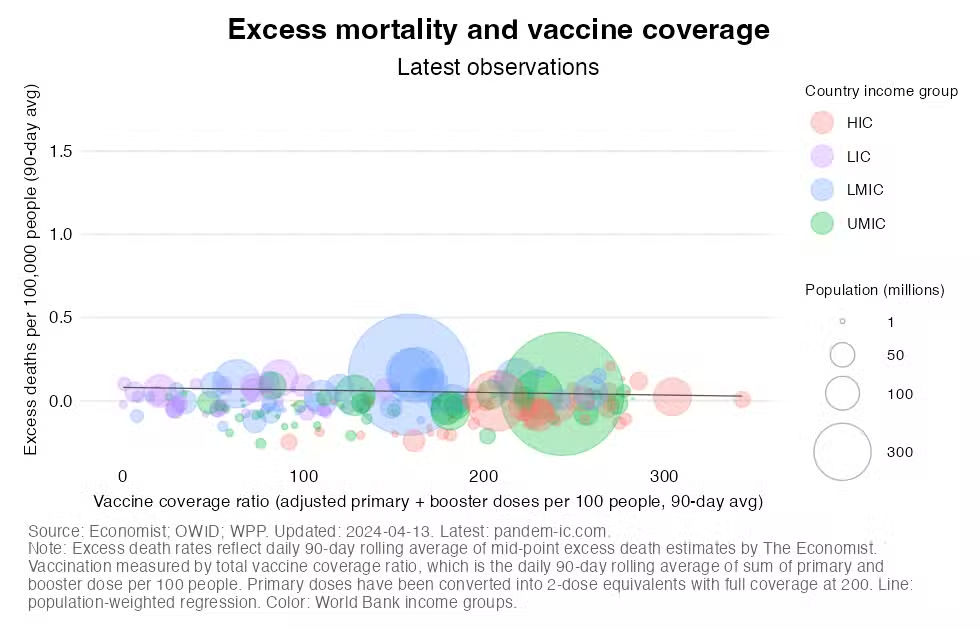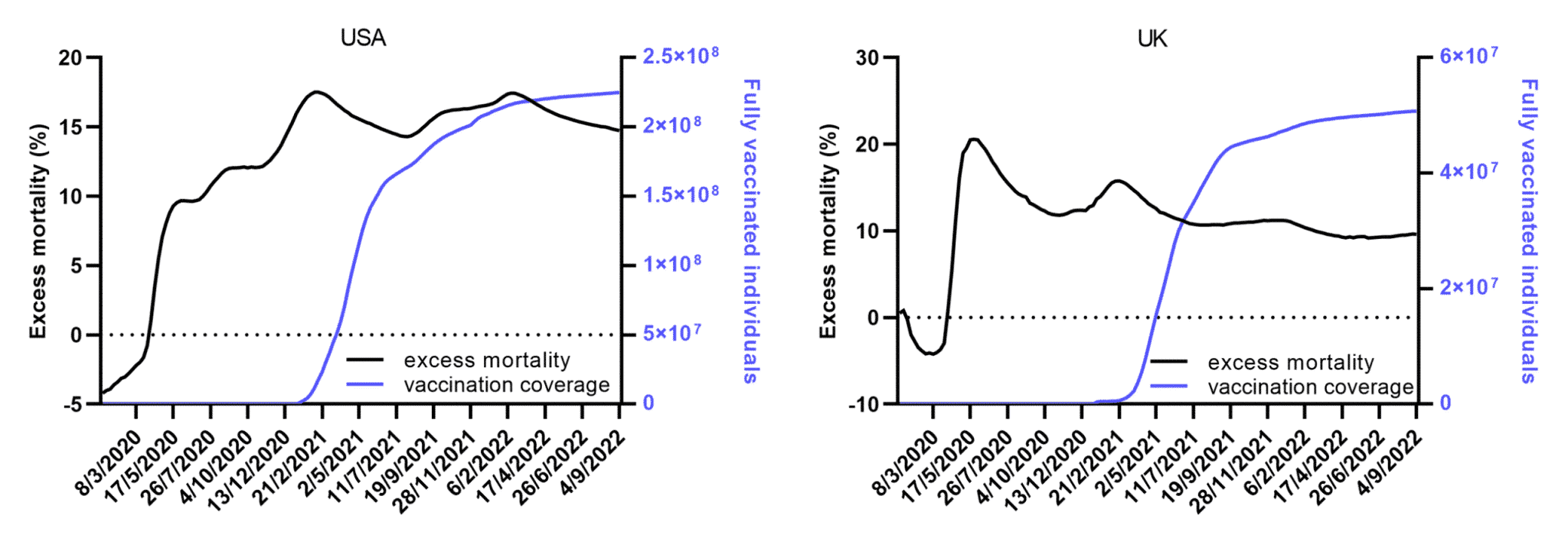- Health
COVID-19 mRNA vaccines were tested in clinical trials, aren’t experimental
Key takeaway
Clinical trials and ongoing vaccine monitoring efforts show that COVID-19 vaccines are effective at reducing a person’s risk of severe disease and death. Like any medical intervention, vaccines also come with risks. While COVID-19 mRNA vaccines are linked to a slight increase in the risk of myocarditis (inflammation of the heart muscle), COVID-19 itself is associated with a greater risk of heart inflammation and other health complications. On balance, the benefits of the COVID-19 mRNA vaccines outweigh their risks.
Reviewed content

Verdict:
Claim:
COVID-19 mRNA vaccines are experimental, “ineffective and harmful”
Verdict detail
Factually inaccurate: COVID-19 mRNA vaccines went through multiple stages of clinical testing to ensure their safety and effectiveness. As they’ve already cleared clinical trials, they’re no longer experimental. The trials and real-world data have also shown that COVID-19 vaccines are effective at reducing the risk of severe disease and death.
Full Claim
“Who stands to profit from an ineffective and harmful vaccine sold as the solution to a global pandemic more than pharmaceutical companies?”; “It's the greatest experiment that has ever been performed in the history of medicine and it's being performed on human beings”
Review
A Facebook reel posted on 26 April 2024 by the Pastor Chris Facebook page, which has more than two million followers, claimed that COVID-19 vaccines are “ineffective and harmful”. In the reel, faith leader and preacher Chris Oyakhilome called COVID-19 mRNA vaccines “terrible”. This was followed by remarks from several individuals—Robert Malone, Sucharit Bhakdi, and Peter McCullough—all of whom have spread COVID-19 vaccine misinformation.
Bhakdi called COVID-19 vaccines “the greatest experiment that has ever been performed in the history of medicine”, while McCullough claimed there were unexplained deaths due to the COVID-19 vaccines.
Oyakhilome himself spread vaccine misinformation and conspiracy theories on previous occasions, alleging vaccines are part of a depopulation plot and that the COVID-19 pandemic was caused by 5G technology. Loveworld Inc., a television network that he founded, was fined twice in 2021 by British regulator Ofcom for making inaccurate claims about the pandemic.
The reel repeats debunked claims about COVID-19 vaccines, as we will explain below.
COVID-19 vaccines were tested in clinical trials before being authorized for public use
The claim that the COVID-19 vaccines are experimental is a common talking point used by those opposed to the vaccines. It is also occasionally combined with misleading mentions of the Nuremberg Code (addressed here and here), feeding into Holocaust distortion.
The claim has been refuted by experts; Science Feedback and fact-checking groups also previously covered iterations of this claim.
As we’ve explained before, regulatory agencies only allowed these vaccines to be available for public use after they completed the necessary clinical trials to assess their safety and effectiveness. These trials included tens of thousands of participants. Because they’ve cleared these trials, the vaccines are no longer in the experimental stage.
While COVID-19 mRNA vaccines were developed and rolled out a lot more quickly than other vaccines, this doesn’t mean that scientists cut corners in the vaccines’ development nor in their review of the trial data. This accelerated timeline was made possible by combining certain clinical trial phases and scaling up vaccine manufacturing capacity earlier than usual, as explained here and here.
Finally, contrary to the reel’s claim that COVID-19 vaccines are “ineffective”, the initial clinical trials[1,2] and continued vaccine monitoring efforts show that COVID-19 vaccines are highly effective at reducing a person’s risk of severe disease and death.
The claim that the COVID-19 mRNA vaccines are “harmful” is misleading. While COVID-19 mRNA vaccines are indeed linked to a slight increase in the risk of myocarditis (inflammation of the heart muscle), COVID-19 itself is associated with a greater risk of heart inflammation and other health complications[3]. On balance, the benefits of the COVID-19 mRNA vaccines outweigh their risks.
People vaccinated against COVID-19 don’t have a greater mortality rate compared to unvaccinated people
In the reel, cardiologist Peter McCullough, who has spread misinformation about the COVID-19 vaccines, invoked unexplained deaths that he claimed were “tightly linked” to the COVID-19 vaccines. This isn’t the first time McCullough claimed COVID-19 vaccines cause death (see examples documented here and here).
His claims represent another common anti-vaccine tactic, which associates COVID-19 vaccines with deaths that occurred after COVID-19 vaccines were rolled out. Such claims are sometimes accompanied with mentions of the phrase “died suddenly”. The implication is that COVID-19 vaccines increase a person’s risk of death.
Science Feedback debunked various iterations of such claims, which have misleadingly invoked excess mortality, cancer incidence, and cardiac deaths as evidence. An Associated Press report documented how anti-vaccine groups promoted these claims, even in cases where the deceased was actually unvaccinated.
But the notion that vaccinated people have a greater mortality rate than unvaccinated people is unsubstantiated by evidence. Published studies so far haven’t found that vaccinated people experience higher all-cause mortality (death from any cause) compared to unvaccinated people[4,5].
Another iteration of this claim is that COVID-19 vaccines caused a large spike in excess mortality. Excess mortality refers to an increase in deaths from any cause that occurs in a given period compared to a baseline, “normal” period. For instance, many countries experienced excess mortality during the COVID-19 pandemic compared to the years before the pandemic.
But this claim also doesn’t stand up to scrutiny.
For instance, a published study that compared mortality in the U.S. and other peer countries between June 2021 and March 2022 found that the U.S. generally lagged behind peer countries in terms of COVID-19 and excess mortality[6]. However, the gap in excess mortality narrowed when comparing peer countries with the ten most-vaccinated U.S. states. In addition, excess all-cause mortality was greater in the ten least-vaccinated states than in the ten most-vaccinated states in the U.S.
In another instance, economist Philip Schellekens showed—using data from The Economist, Our World in Data, and World Population Prospects—that excess mortality isn’t higher in countries with greater vaccine coverage, as indicated by the flat black line (Figure 1). The graph shows the number of excess deaths per 100,000 people and vaccine coverage, which is defined as the number of vaccine doses administered per 100 people. The color of each circle indicates a country’s income group. The size of each circle indicates the size of the country’s population.

Science Feedback also analyzed excess mortality and vaccine coverage data from the U.S. and the U.K. in this Insight article. Using data from Our World in Data, we showed that rising vaccine coverage in both countries didn’t correlate with additional excess mortality (Figure 2).

We can reason that if COVID-19 vaccines were responsible for a rise in excess mortality, we should see excess mortality correlate with vaccine coverage. However, population-level data doesn’t show such a correlation. Instead, real-world data exhibits trends that are inconsistent with the notion that COVID-19 vaccination is linked to excess deaths.
REFERENCES
- 1 – Polack et al. (2020) Safety and Efficacy of the BNT162b2 mRNA Covid-19 Vaccine. New England Journal of Medicine.
- 2 – Baden et al. (2021) Efficacy and Safety of the mRNA-1273 SARS-CoV-2 Vaccine. New England Journal of Medicine.
- 3 – Writing Committee. (2022) 2022 ACC Expert Consensus Decision Pathway on Cardiovascular Sequelae of COVID-19 in Adults: Myocarditis and Other Myocardial Involvement, Post-Acute Sequelae of SARS-CoV-2 Infection, and Return to Play: A Report of the American College of Cardiology Solution Set Oversight Committee. Journal of the American College of Cardiology.
- 4 – Xu et al. (2021) COVID-19 Vaccination and Non–COVID-19 Mortality Risk — Seven Integrated Health Care Organizations, United States, December 14, 2020–July 31, 2021. Morbidity and Mortality Weekly Report.
- 5 – Liu et al. (2023) Effectiveness of COVID-19 vaccination against COVID-19 specific and all-cause mortality in older Australians: a population based study. The Lancet Regional Health Western Pacific.
- 6 – Bilinski et al. (2023) COVID-19 and Excess All-Cause Mortality in the US and 20 Comparison Countries, June 2021-March 2022. JAMA Network.



